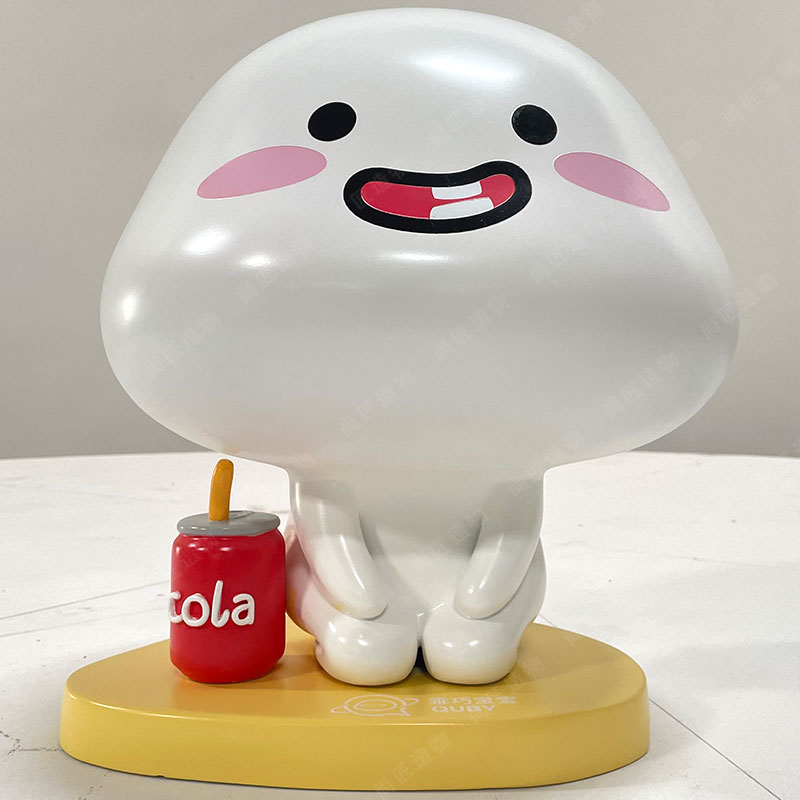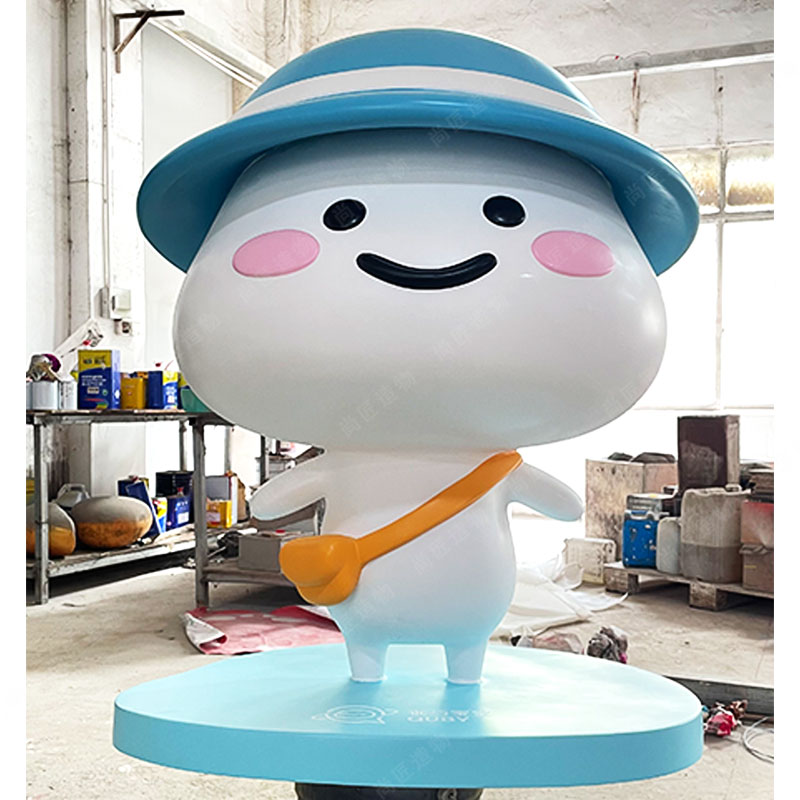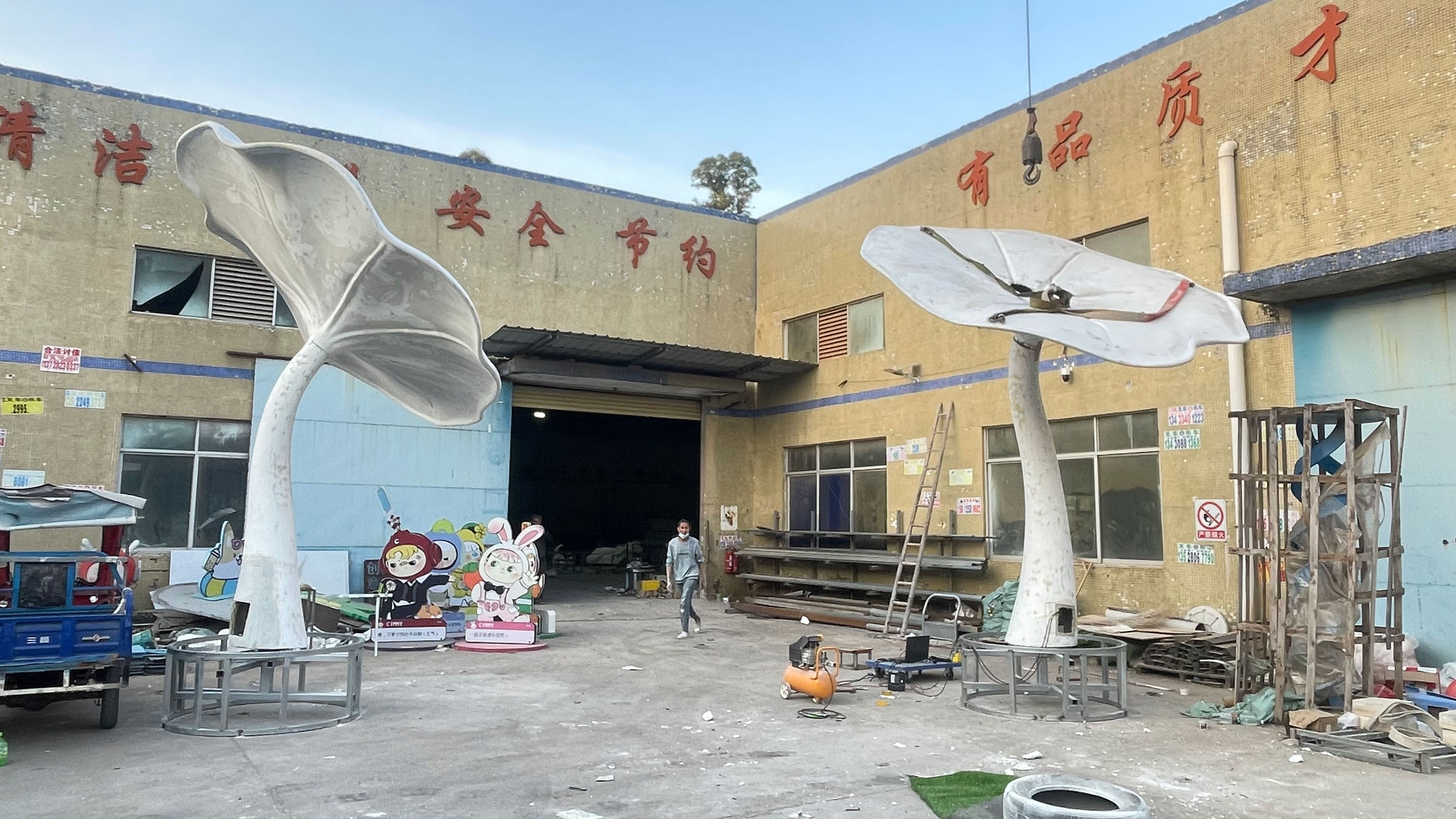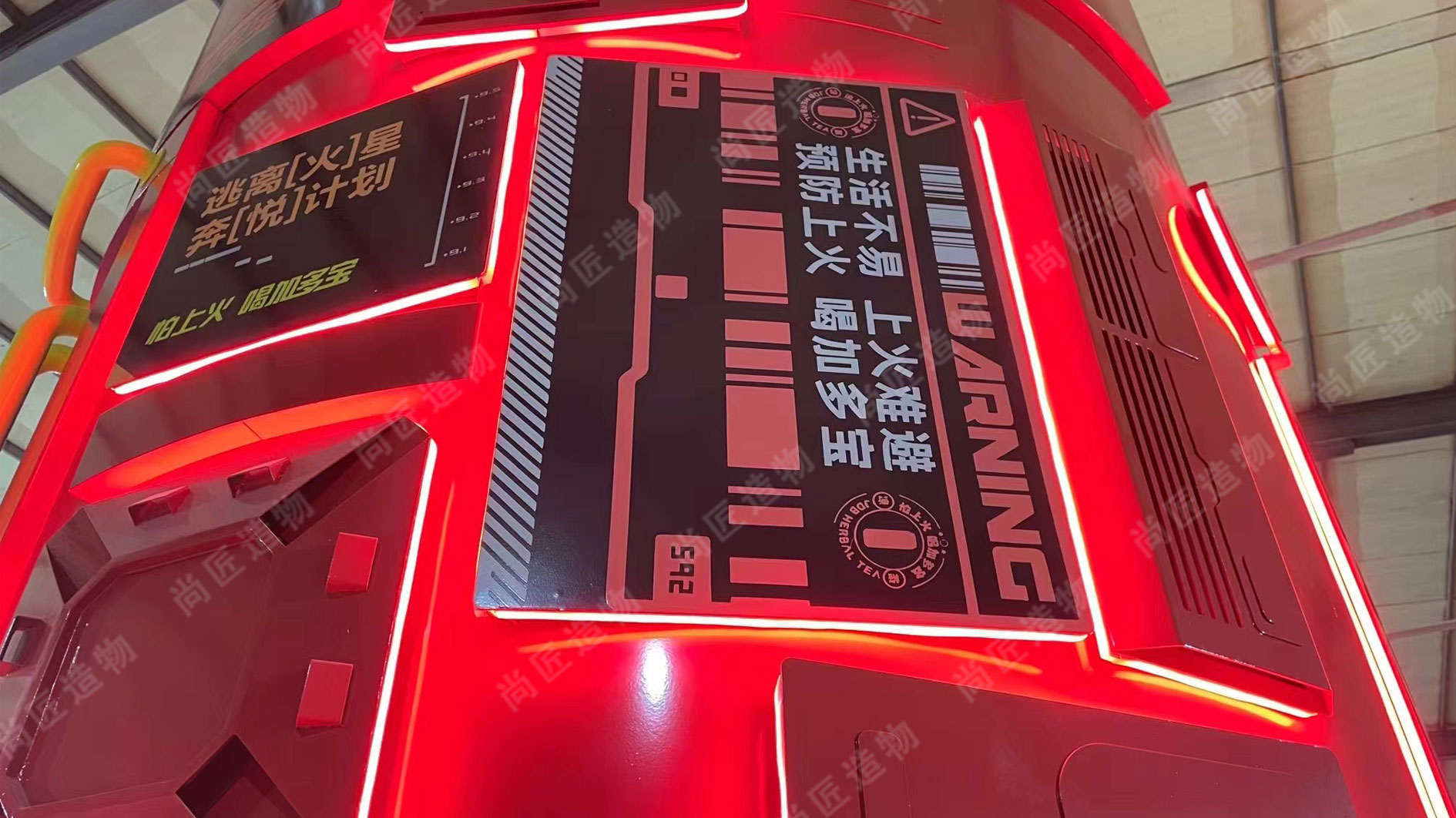Key Takeaways
Stainless steel sculptures represent a fusion of technical expertise and creative ambition, offering insights into how industrial materials evolve into cultural symbols. Below are essential points to understand their significance:
| Aspect | Traditional Sculpture | Modern Stainless Steel Art |
|---|---|---|
| Material | Stone, bronze, clay | High-grade stainless steel |
| Durability | Prone to weathering | Corrosion-resistant |
| Aesthetic Focus | Figurative forms | Abstract, reflective surfaces |
| Installation | Static placements | Dynamic, site-specific designs |
"Stainless steel challenges artists to rethink light and space. Its mirror-like surface doesn’t just capture images—it interacts with its environment." — Elena Marquez, Public Art Curator
Three factors drive the prominence of stainless steel in contemporary art:
- Versatility: The metal adapts to polished, brushed, or textured finishes, enabling artists to manipulate light and shadow.
- Longevity: Unlike iron or copper, it resists rust, making it ideal for outdoor installations.
- Architectural Synergy: Its sleek appearance complements modern buildings, bridging art and urban design.
Tip: When commissioning a stainless steel sculpture, consider its orientation—the angle of sunlight can dramatically alter its visual impact.
While traditional materials emphasize historical continuity, stainless steel embodies innovation. Advances in laser cutting and 3D modeling allow precise fabrication of complex geometries, ensuring each piece balances structural integrity with artistic intent. This interplay between engineering and aesthetics defines the genre’s growing influence in both galleries and civic spaces.

Metal Meets Artistry in Modern Sculpture
Contemporary artists bridge industrial materials and creative vision by manipulating stainless steel’s unique properties—durability, corrosion resistance, and malleability—into dynamic sculptural forms. Unlike traditional mediums, metal offers a paradoxical blend of structural rigidity and fluid aesthetic potential. Modern fabrication techniques, such as plasma cutting and TIG welding, allow creators to shape sheets and rods into abstract geometries or organic silhouettes that challenge perceptions of weight and motion.
The interplay between light and polished surfaces transforms static metal into kinetic experiences, with reflections shifting alongside viewers’ perspectives. This interaction underscores how realistic sculpture principles inform even abstract works, where technical precision balances artistic intuition. Architects and sculptors collaborate to integrate these pieces into urban landscapes, leveraging stainless steel’s weather-resistant qualities for outdoor installations that withstand decades.
By merging engineering-grade accuracy with freeform design, today’s metal sculptors redefine public and private spaces. Their work demonstrates how cold, industrial materials can evoke warmth through texture, curvature, and strategic light capture—proving that artistry thrives where science and imagination intersect.
Crafting Timeless Reflective Artworks
The creation of stainless steel sculptures hinges on balancing structural integrity with aesthetic finesse. Artists begin by selecting corrosion-resistant alloys, often using cold-rolled steel for its uniform surface, which becomes a canvas for light and shadow. Precision cutting and welding techniques ensure seamless joints, while hand-polishing or mechanical buffing enhances reflectivity. This process transforms rigid metal into fluid forms that interact dynamically with their surroundings—capturing sunlight by day and artificial illumination at night.
Durability plays a critical role, as these artworks withstand weather extremes in outdoor installations or retain their luster in indoor settings. The Stainless steel sculpture tradition draws from both industrial engineering and minimalist design principles, resulting in pieces that feel simultaneously futuristic and timeless. Beyond technical execution, artists experiment with geometric abstraction and organic curves, creating visual tension between the material’s industrial origins and its softened, reflective finish. Such works often serve as focal points in urban plazas or corporate lobbies, where their mirrored surfaces amplify spatial dimensions and invite viewer engagement through ever-changing reflections.

Industrial Precision in Artistic Metalwork
The creation of stainless steel sculptures demands a synergy of engineering rigor and creative intuition. Advanced manufacturing techniques, such as CNC machining and laser cutting, enable artists to translate intricate designs into flawlessly balanced forms. Unlike traditional materials like bronze or Fiberglass sculpture, stainless steel’s structural integrity allows for slender, gravity-defying shapes while maintaining resistance to corrosion and weathering. This precision extends to surface finishing, where techniques like mirror polishing or bead blasting are calibrated to achieve specific light-reflective qualities.
Industrial tools also streamline large-scale production, ensuring consistency in public installations or architectural integrations. Yet, the process remains deeply collaborative—engineers and artisans work in tandem to troubleshoot load distribution, joint welding, and thermal expansion. Such technical mastery does not stifle creativity; instead, it expands possibilities for dynamic geometries and kinetic elements. The result is artwork that harmonizes mathematical accuracy with fluid, organic expression, proving that industrial methods can coexist with—and even enhance—artistic vision.
Sculptural Innovations in Urban Design
Urban designers increasingly turn to stainless steel sculptures to address the dual demands of functionality and aesthetic impact in public spaces. Unlike traditional materials, stainless steel’s corrosion resistance and structural integrity allow for large-scale installations that withstand weather extremes while maintaining visual clarity. Cities worldwide now integrate abstract and geometric forms into plazas, parks, and transit hubs, using reflective surfaces to amplify natural light or create dynamic interactions with passersby. For instance, undulating metal arches can guide pedestrian flow, while polished spheres mirror surrounding architecture, blending old and new design languages.
This adaptability extends to thematic installations, such as Cartoon sculpture, where stainless steel’s malleability supports playful, larger-than-life figures that engage diverse audiences. Meanwhile, laser-cut patterns on benches or barriers demonstrate how artistry can enhance everyday infrastructure. By merging technical durability with creative experimentation, these works redefine urban landscapes as immersive galleries—proving that practicality and imagination need not exist in opposition.
Elevating Spaces With Stainless Steel Art
Stainless steel sculptures act as transformative focal points, merging structural integrity with aesthetic innovation to redefine environments. Their reflective surfaces interact dynamically with light, casting shimmering patterns that shift with the sun’s movement or artificial illumination. This interplay makes them ideal for corporate lobbies, where polished metal art conveys professionalism, or public plazas, where large-scale installations create landmarks. Architects and designers often leverage stainless steel’s corrosion resistance to craft weather-resistant pieces for outdoor settings, ensuring longevity in parks or waterfronts.
The material’s adaptability allows for both geometric precision and fluid, organic forms. For example, angular sculptures can complement modernist buildings, while curved designs soften industrial urban landscapes. Beyond aesthetics, these works serve functional roles—guiding foot traffic as sculptural partitions or enhancing acoustics in open-plan interiors. Customizable finishes, from mirror-polished to brushed textures, enable tailored solutions for brand-centric spaces. IP character sculpture designs, for instance, demonstrate how stainless steel can embody cultural or corporate identities through abstract or figurative motifs.
Maintenance simplicity further elevates stainless steel’s appeal, requiring only periodic cleaning to retain its luminosity. This low upkeep, combined with its timeless visual impact, positions it as a strategic choice for projects balancing artistic ambition with practical durability.

The Science Behind Luminous Steel Sculptures
The luminous quality of stainless steel sculptures arises from precise material science and engineering. Stainless steel’s chromium content forms an invisible oxide layer, granting resistance to corrosion while enabling reflective surfaces. Polishing techniques—from mirror finishes to brushed textures—manipulate light diffusion, creating dynamic interactions with natural or artificial illumination. Advanced metallurgical treatments, such as passivation, enhance durability without compromising the metal’s ability to bounce light in controlled patterns.
Beyond mere durability, the alloy’s crystalline structure allows for seamless shaping, ensuring curves and angles retain their geometric integrity under stress. This structural resilience supports large-scale installations, where even subtle shifts in sunlight or ambient lighting can transform a static form into a Kinetic sculpture that appears to move. Engineers and artists collaborate to calculate reflectivity ratios, balancing aesthetic goals with environmental factors like UV exposure and pollution. The result is art that not only withstands the elements but evolves with them, blending scientific rigor with visual poetry.
Bold Aesthetics of Contemporary Metal Art
Contemporary stainless steel sculptures redefine visual impact through their striking geometric forms and mirror-like surfaces. Departing from traditional materials like stone or bronze, these works embrace industrial minimalism while amplifying light and shadow. Sharp angles contrast with organic curves, creating dynamic tension that shifts with the viewer’s perspective. Polished finishes reflect surroundings in fragmented or distorted ways, transforming static installations into interactive experiences shaped by weather, time, and human movement.
Artists leverage steel’s malleability to explore themes of progress and impermanence. For instance, urban installations often juxtapose rigid metal against natural landscapes, challenging perceptions of harmony and control. The material’s resistance to corrosion ensures these bold statements retain their edge for decades, even in harsh environments. By manipulating light and spatial relationships, stainless steel sculptures become more than objects—they act as catalysts for reimagining how art interacts with architecture and public life.
Enduring Beauty in Architectural Sculptures
Stainless steel’s unique properties make it a natural fit for architectural sculptures designed to withstand both time and the elements. Unlike traditional materials that degrade under exposure to moisture, temperature shifts, or pollution, stainless steel maintains its structural integrity while developing a subtle patina that enhances its visual depth. Architects and artists collaborate to integrate these sculptures into building facades, courtyards, and atriums, where their reflective surfaces interact dynamically with natural light and surrounding structures.
The material’s adaptability allows for seamless fusion with modern and historic architecture alike. For instance, polished steel installations in urban plazas contrast sharply with glass skyscrapers, creating visual tension, while brushed-finish pieces in heritage districts complement aged stonework through muted textures. This balance between permanence and adaptability ensures sculptures remain relevant as architectural styles evolve.
Beyond aesthetics, stainless steel’s low maintenance requirements align with sustainable design principles. Its resistance to corrosion eliminates the need for frequent repairs, reducing long-term environmental impact. By merging artistic ambition with engineering pragmatism, these works transform functional spaces into lasting cultural landmarks—proof that beauty and resilience can coexist in the built environment.

Conclusion
Stainless steel sculpture represents the harmonious intersection of material science and creative expression. Its enduring nature and reflective surfaces not only withstand environmental challenges but also evolve with shifting light and context, offering dynamic interactions between art and space. As demonstrated throughout this exploration, the marriage of industrial-grade precision and artistic vision enables these works to transcend mere decoration, becoming landmarks of cultural identity and technological achievement. Their adaptability—from urban landscapes to private interiors—showcases how metal artistry bridges functional durability with aesthetic innovation. By integrating form, materiality, and purpose, stainless steel sculptures continue to redefine modern artistry, inviting viewers to engage with environments in ways that celebrate both human ingenuity and the timeless allure of crafted metal.
FAQs
How long do stainless steel sculptures last outdoors?
Stainless steel sculptures are designed for durability, often lasting decades without significant corrosion. The alloy’s chromium content forms a protective oxide layer, resisting rust even in humid or coastal environments.
Can these sculptures be customized for specific spaces?
Yes. Artists and fabricators collaborate to tailor dimensions, shapes, and finishes to complement architectural styles or site-specific themes. Reflective surfaces, for example, can mirror natural landscapes or urban geometry.
What maintenance do they require?
Routine cleaning with mild soap and water prevents dirt buildup. Unlike iron or bronze, stainless steel doesn’t need protective coatings, though occasional polishing restores shine for highly reflective pieces.
Are stainless steel sculptures environmentally sustainable?
Stainless steel is 100% recyclable, reducing waste in production. Its longevity also minimizes replacement needs, making it a lower-impact choice compared to less durable materials.
How are large-scale sculptures installed securely?
Engineers use reinforced concrete foundations or steel frames anchored to the ground. Wind load, weight distribution, and soil stability are calculated to ensure structural integrity over time.
Do weather conditions affect their appearance?
While temperature shifts cause slight expansion or contraction, the material’s resilience prevents warping. Rain and snow may temporarily alter surface reflections but don’t damage the metal itself.
 ch
ch English
English






